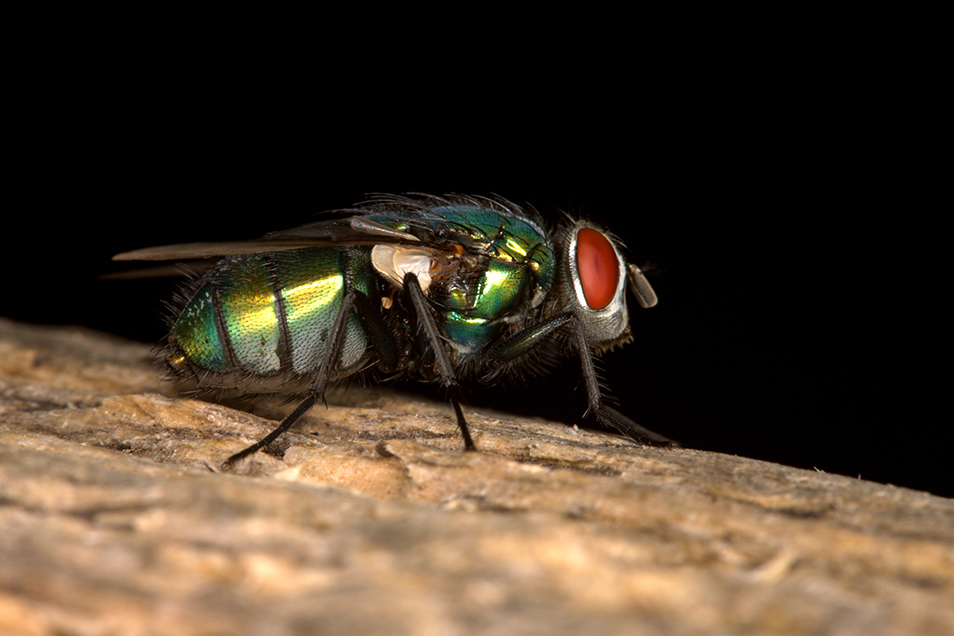You want flies with that? Preventing & managing flystrike
06 Oct 2021
 PRODUCTION ADVICE - OCTOBER 2021 - ANIMAL BIOSECURITY & WELFARE
PRODUCTION ADVICE - OCTOBER 2021 - ANIMAL BIOSECURITY & WELFARE
By Katelyn Braine
District Veterinarian
M: 0499 339 018 | katelyn.braine@lls.nsw.gov.au
 Warmer days and the prediction of above-average rainfall for spring mean it’s time to look out for flystrike and be thinking about flystrike prevention. Flies can significantly impact our sheep flocks, causing mortality and loss of production, particularly with breech strike and body strike. The Australian sheep blowfly, Lucilia cuprina, causes over 90 percent of all flystrike in Australian flocks.
Warmer days and the prediction of above-average rainfall for spring mean it’s time to look out for flystrike and be thinking about flystrike prevention. Flies can significantly impact our sheep flocks, causing mortality and loss of production, particularly with breech strike and body strike. The Australian sheep blowfly, Lucilia cuprina, causes over 90 percent of all flystrike in Australian flocks.
Maggots dropped into the soil during autumn have been in the pre-pupa stage in the soil over winter. They have pupated and emerged as immature flies in the first few weeks of spring as the soil temperature has risen above 15 degrees Celsius. By now these flies will have likely matured to adult flies and will have potentially started laying eggs on susceptible sheep, continuing the lifecycle and increasing fly numbers.
Susceptibility of sheep to flystrike is determined primarily by fleece moisture. Moist wool can develop fleece rot and/or lumpy wool, which attracts blowflies. Urine- or faeces-stained wool, skin wounds, tissue damage such as footrot, weeping eyes and sweat around the base of the horns of rams can also make sheep susceptible. The potentially wetter-than-average spring in our area increases the risk of moisture in the fleece and subsequent flystrike.
What should I do if I find a struck sheep?
Any sheep showing pulled or discoloured wool should be examined. Once identified, the struck area should be clipped with wide margins, allowing the skin to dry out and exposing maggot trails. The wool and maggots should then be placed in a black plastic bag and left in the sun to ensure the maggots are killed. The struck area should be dressed thoroughly with an appropriate registered chemical, preventing the area from being restruck as the wound heals.
What can I do to prevent flystrike in my flock?
There is a range of insecticides available that you can use to prevent and treat flystrike. It’s important to rotate the use of chemicals to reduce resistance in the sheep blowfly. To date, there has been some medium to high resistance in the sheep blowfly reported in products containing dicyclanil, cyromazine and diazinon. To reduce the risk of resistance developing, you should not reapply the same chemical class for flystrike dressings, flystrike prevention or lice treatments within a single wool cycle.
While chemical application is a valuable tool in managing flystrike in your flock, it is important to use it strategically along with breeding and other management tools such as shearing, crutching and/or breech modification to further reduce the risk.
Flystrike can be highly repeatable, meaning that a sheep that becomes struck will likely be struck again in the future. If you have ongoing issues with flystrike, you should consider culling for strike, high-wrinkle and/or fleece rot scores as part of a wider genetic selection strategy for long-term prevention of flystrike in your flock.
Shearing or crutching is also a valuable tool in your armoury, as it can provide up to six weeks protection against strike. As daggy sheep attract flies, it’s also important to incorporate good worm control into management strategies to minimise dags and reduce the risk of flystrike.
When implementing shearing/crutching or chemical prevention strategies, it’s important to note that you should ideally undertake these strategies before soil temperatures increase and the first fly wave occurs. This will help keep fly numbers down for the rest of the season.
FlyBoss.com.au is a useful resource for all things flies and your flock. They have developed some specific tools you can use to assess the effectiveness of a particular chemical application in reducing the risk within your flock. You can also use the tools to compare different management scenarios to optimise chemical treatments, and they provide you with information on breeding to reduce the susceptibility of your flock. The website is a valuable resource when developing a long-term strategic fly management plan for your property.
For more information regarding flystrike in your flock, you can also contact your District Vet by calling 03 5881 9900 (Deniliquin) or 02 6051 2200 (Albury) or drop into a nearby Local Land Services office.